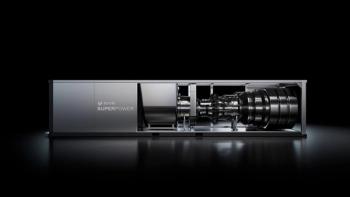
- Handbook 2024
- Volume 64
- Issue 6
Turbo Tips: How Transient Faults Affect Turbomachinery Lube Oil Systems
Guidelines and technical notes for dealing with lube oil, control, and hydraulic oil systems in turbomachinery.
The most serious issue for many large turbomachines, e.g., large pumps, turbocompressors, turbines, and others, is a cut-off of the lube oil flow. This could lead to a catastrophic failure of oil-lubricated bearings, such as hydrodynamic bearings, within a few seconds. It is important to understand how lube oil systems react to temporary faults, such as those that can stop the oil pump.
STARTING THE STANDBY OIL PUMP
At least two full-sized lubrication oil pumps (one operating, another standby) should be employed in any critical turbomachinery with lubricated bearings. The lube oil pump changeover or switch-over (starting the standby pump) in various emergencies is an important topic for any piece of turbomachinery. Starting the standby pump is necessary when lube oil (header) pressure falls. A fast response time is essential, and although there are other solutions and configurations for a decrease in pressure, the direct pressure signal to fast start-up of the standby oil pump is the simplest and most cost-effective solution. Of course, in some cases, even this may not be sufficient and other provisions may be needed.
TRANSIENT FAULTS
A common cause of unscheduled downtime is the lube oil system’s inability to ride through transient events such as a 1- to 6-second loss of electrical power in the network. For some hydrodynamic bearings, even a 2- to 3-second interruption in lube oil flow during a transient situation could cause damage. When an electrical fault happens in the electrical network connected to the operating oil pump, the flow of oil could be lost for the duration of the fault. The question is can the turbomachinery tolerate such a situation?
Another concern when the oil pump fails is the time needed to start up the standby oil pump, which can be an electrical-driven pump connected to an alternative electrical network, a steam turbine-driven oil pump, etc. Can the turbomachinery continue operating properly during this transition? The same applies to many control and/or hydraulic oil systems. An oil accumulator can be used, if needed, to deal with these types of situations.
OIL ACCUMULATOR
An oil accumulator—or a set of accumulators—maintains the oil pressure while the standby oil pump accelerates from an idle condition to an operating speed during a 1- to 6-second loss of electric power, for example, or during other transient situations. The oil pressure should always be above the equipment’s minimum-specified oil-supply pressure. The conservative sizing of the oil accumulator is necessary because:
- Over time, the situation may get worse, and some margin is needed. For example, an electrical-driven pump can degrade over time, which could decrease the available voltage to the electric motor of the standby oil pump. This voltage drop can impose serious limitations on the start-up time needed for the pump.
- To deal with inaccuracies and uncertainties in the theoretical assumptions and analytical calculations.
A bladder-type accumulator is recommended. Accumulators are usually constructed from a 300-series stainless-steel shell and often have a “nitrile” bladder, which forms a barrier between the inert gas (nearly always nitrogen) and the oil. Oil accumulators are usually installed vertically. Nitrogen is the best inert gas for this application because of its availability and chemical and physical properties. Air should not be used because of its corrosive or explosive properties. As a rough indication, the inert gas pre-charge is usually maintained around 80%-85% of the working pressure of the oil system. The high flexibility of the bladder causes the response time to be quick, which is an important factor considering the fast pressure drop in an oil system during an emergency or transient case. A properly selected large accumulator with sufficient pressure capability and a suitable differential pressure (between the oil accumulator and the oil consumption point) offers a fast response time. An oil accumulator should provide the oil flow fast enough and maintain the oil flow for the necessary period at sufficient pressure.
A DIFFERENT TYPE OF ACCUMULATOR
Standard methods and calculation procedures for commonly used water or process accumulators cannot be applied to an oil accumulator. A specific set of requirements and considerations is needed for oil accumulators in lube/control/hydraulic oil services, different from what’s needed for water or process services. An oil accumulator should push oil to the system once the minimum pressure (the low-pressure alarm + a margin) is reached. The required oil should hold up while the mid pressure (the pressure between the maximum and the minimum) is retained. This can result in two to four times more volume for the oil accumulator compared to a conventional water (or process) accumulator.
Amin Almasi is a Chartered Professional Engineer in Australia and the U.K. (M.Sc. and B.Sc. in mechanical engineering). He is a senior consultant specializing in rotating equipment, condition monitoring and reliability.
Articles in this issue
about 2 years ago
U.S. Power Industry Outlook 2024about 2 years ago
Worldwide Gas Turbine Forecast 2024about 2 years ago
Turbomachinery International: Handbook 2024Newsletter
Power your knowledge with the latest in turbine technology, engineering advances, and energy solutions—subscribe to Turbomachinery International today.




